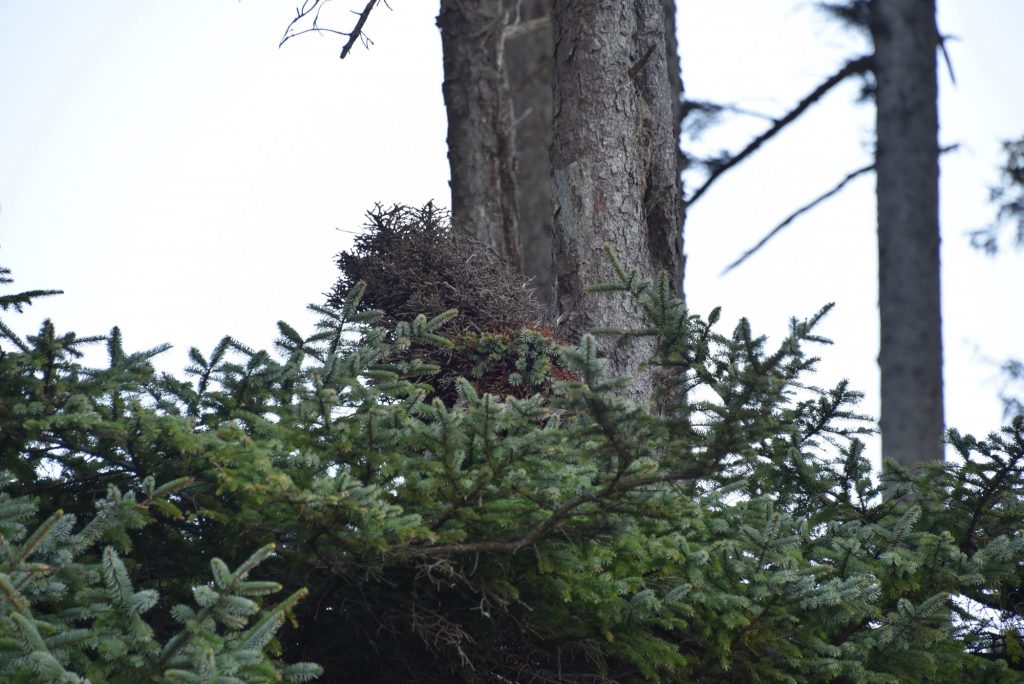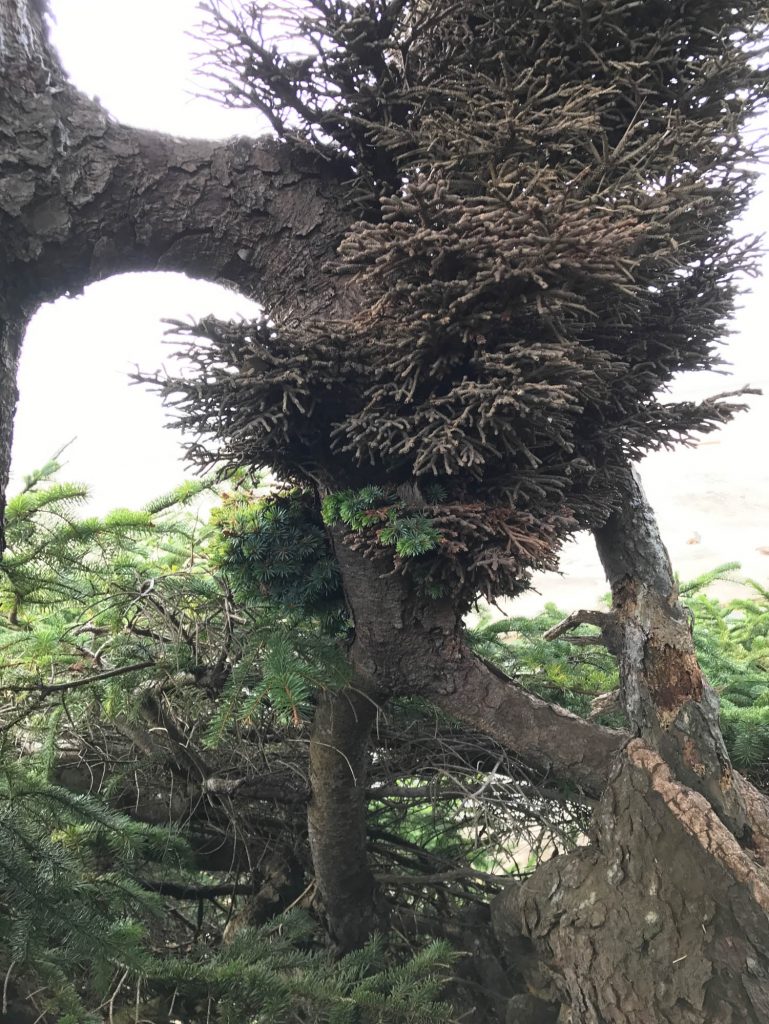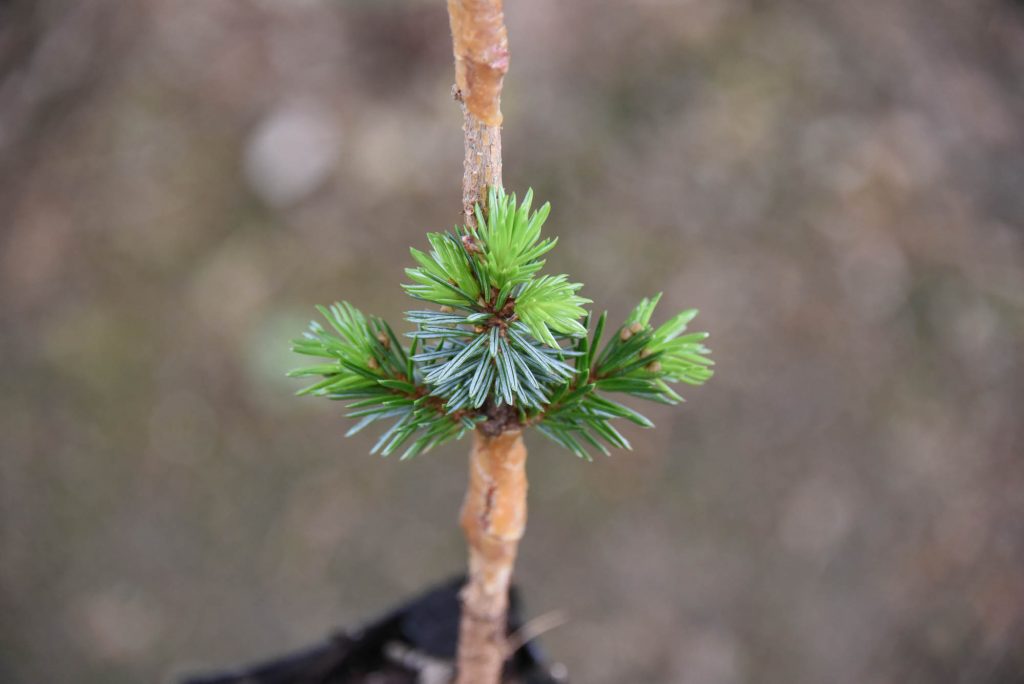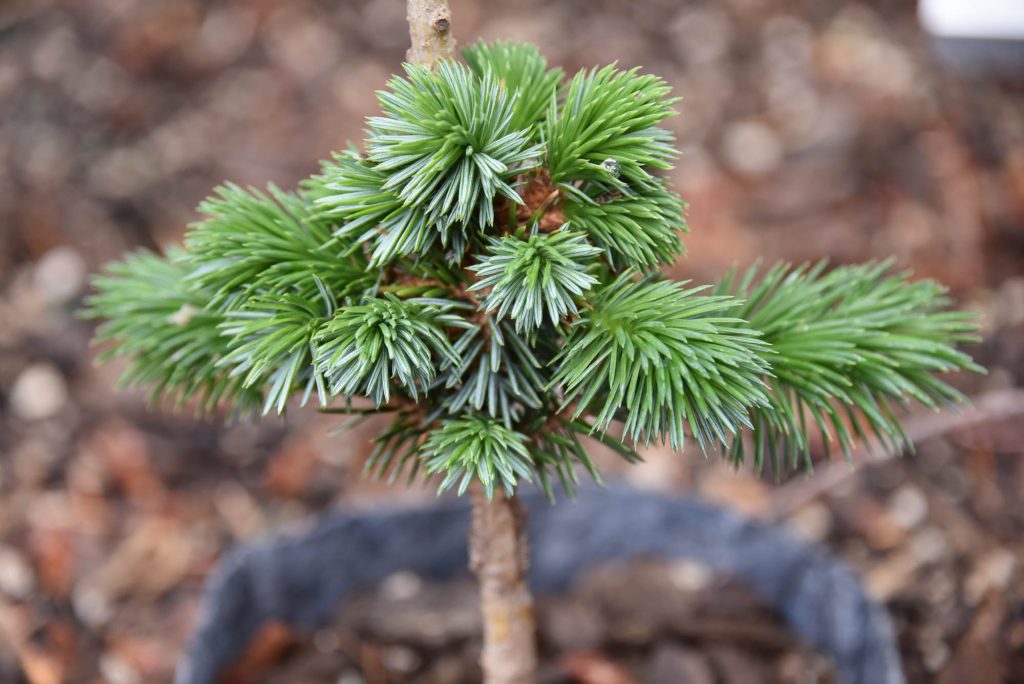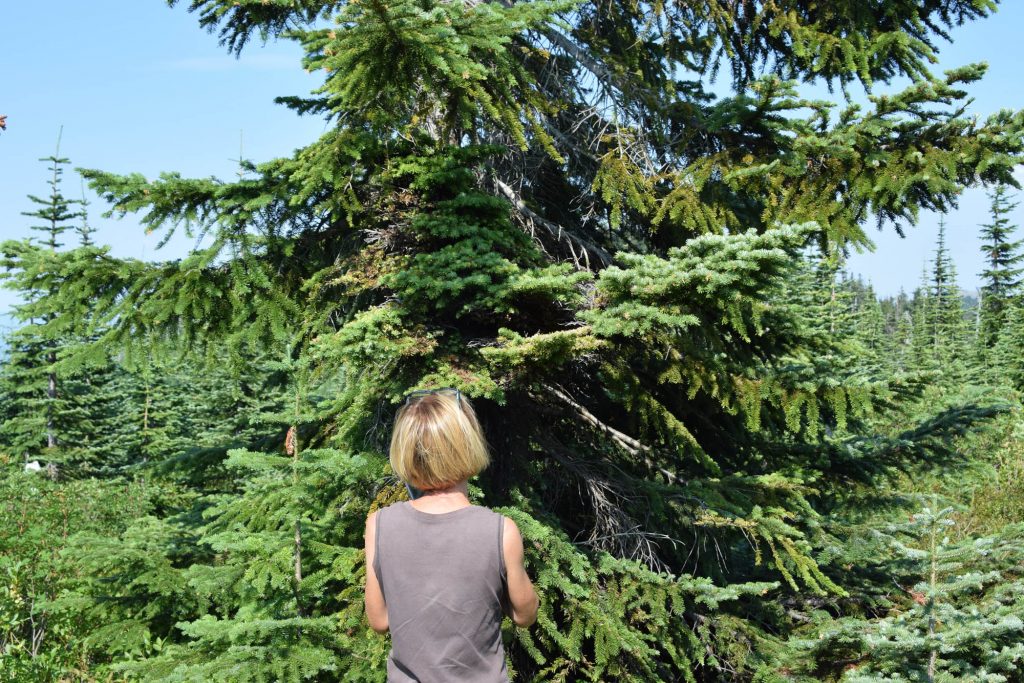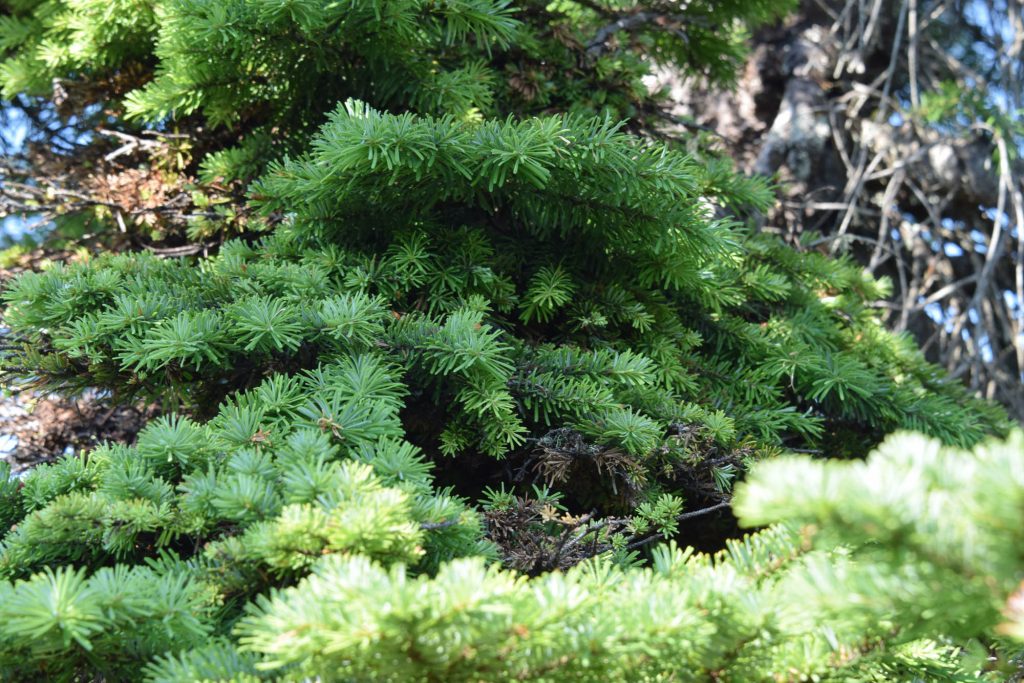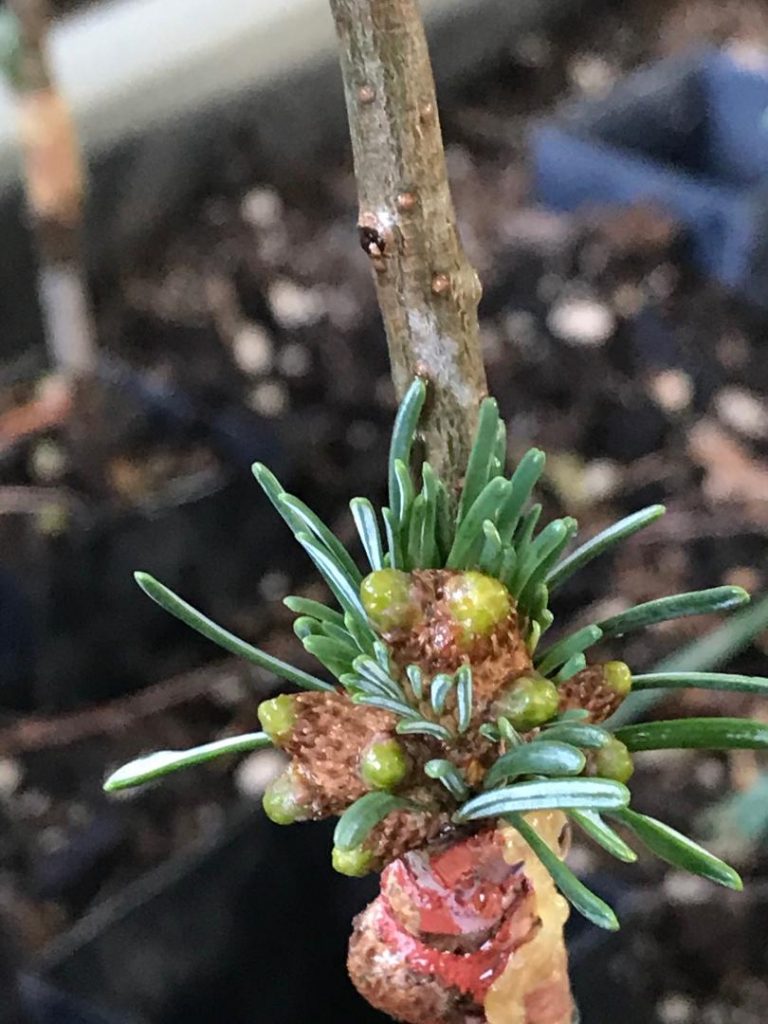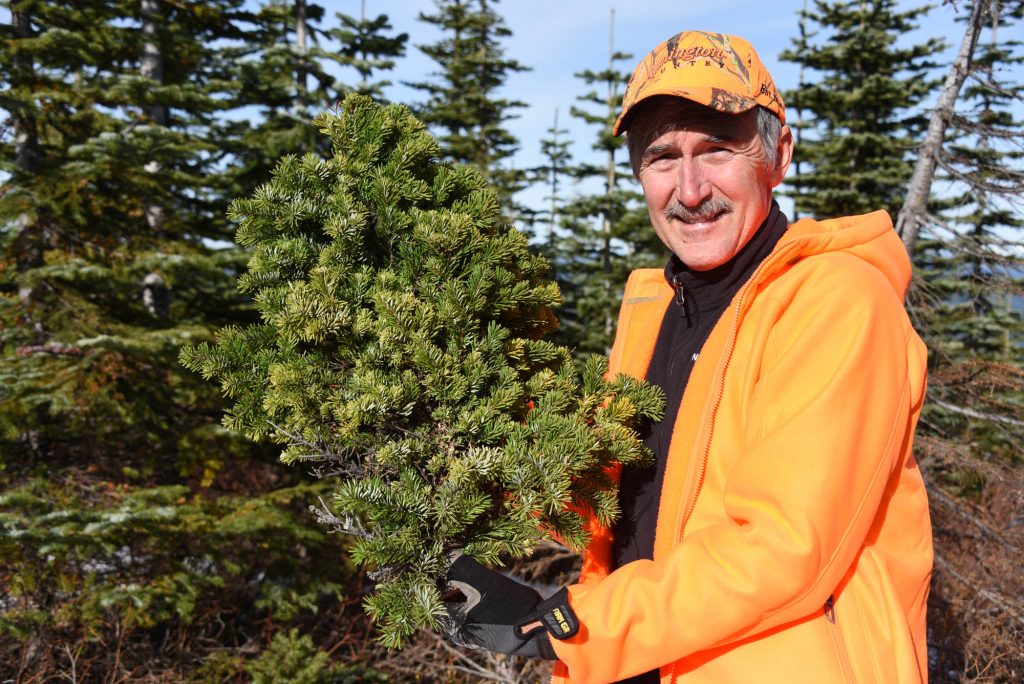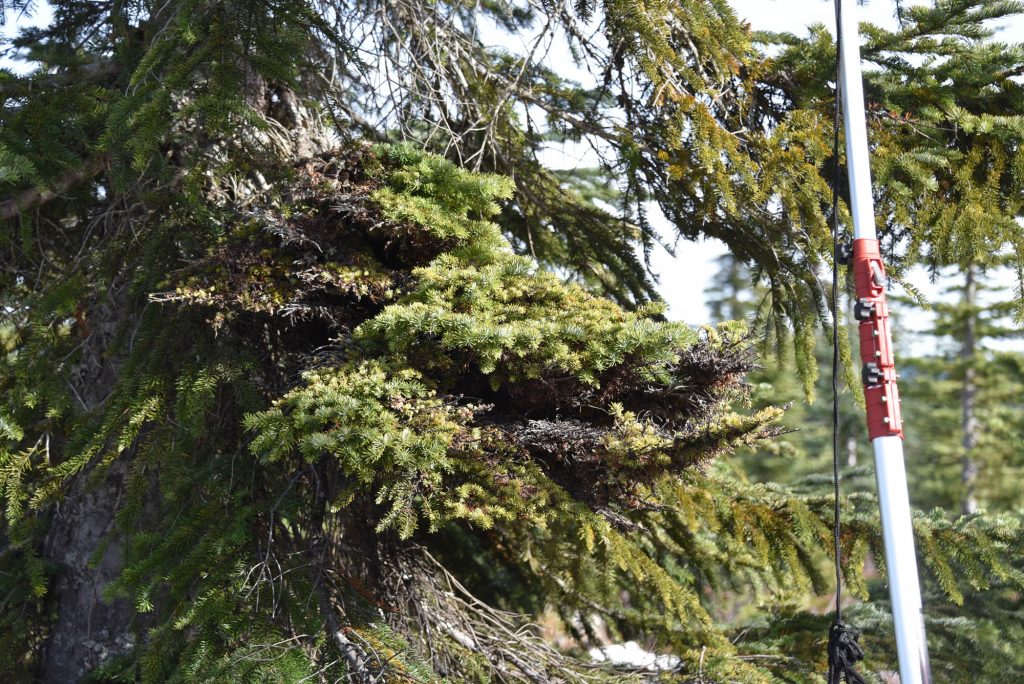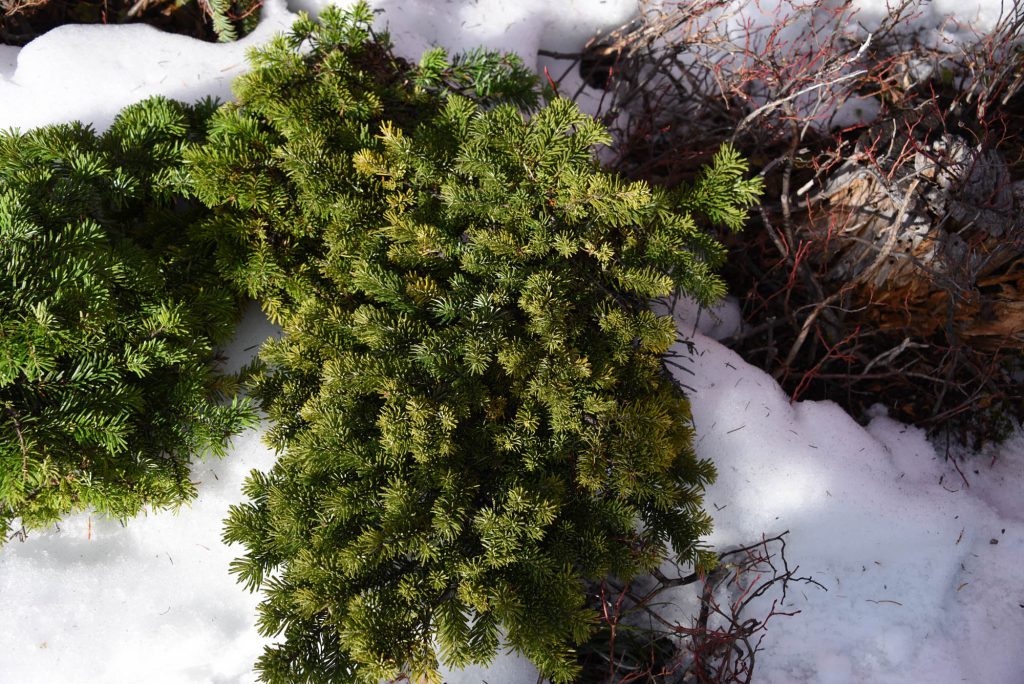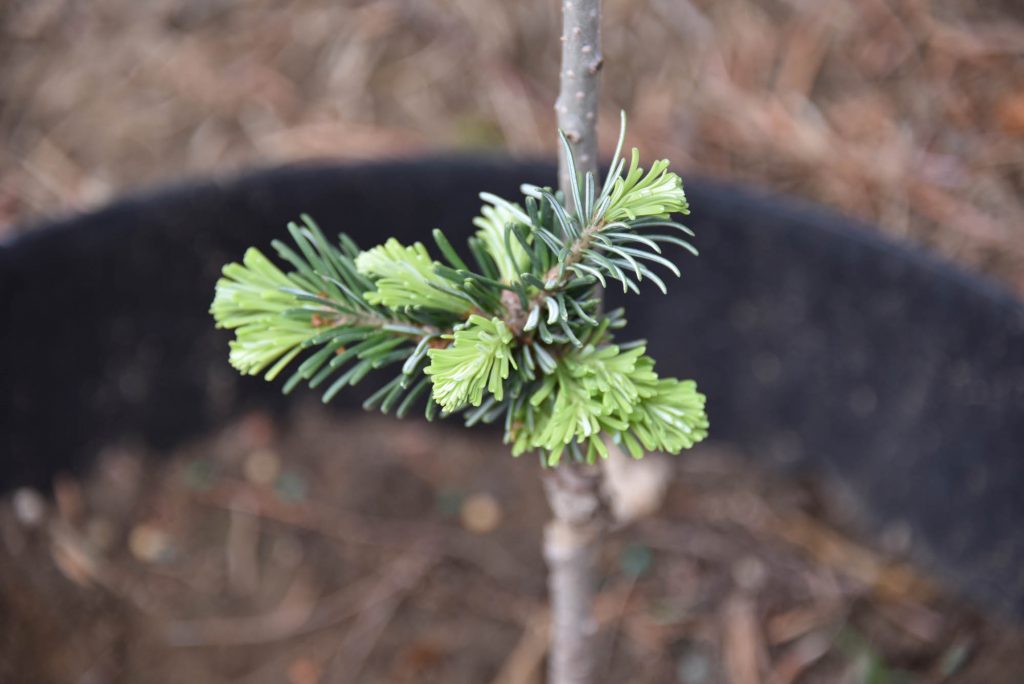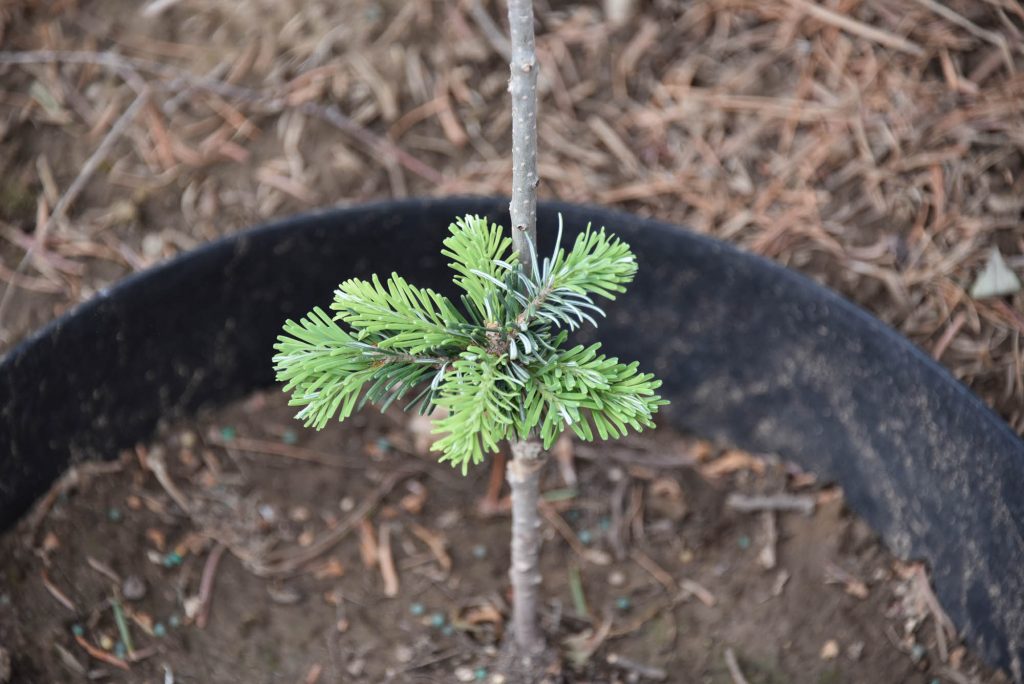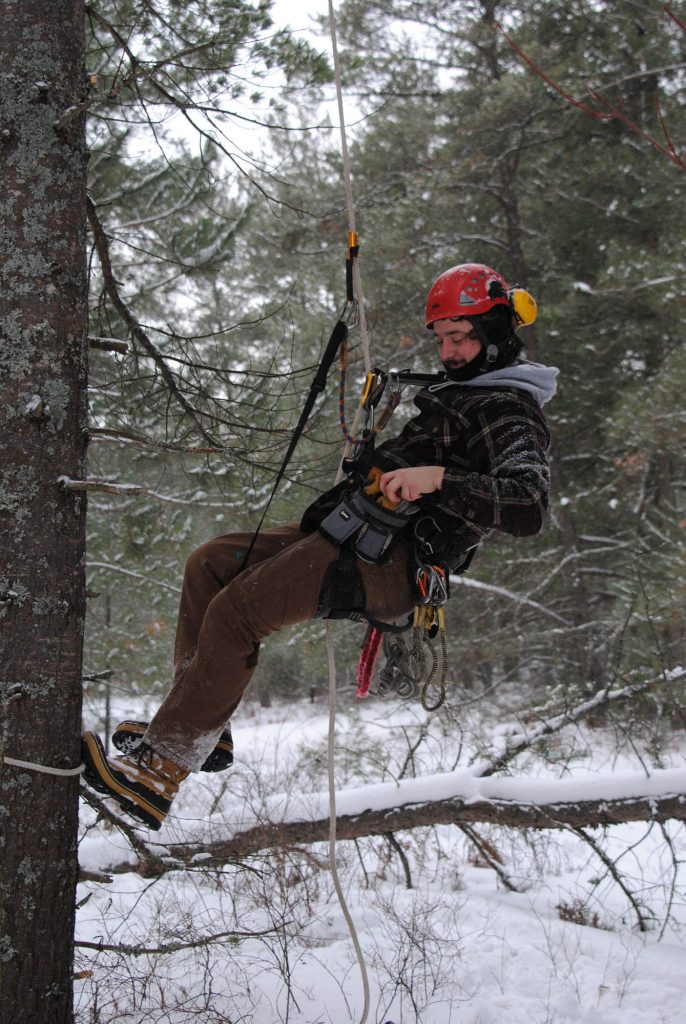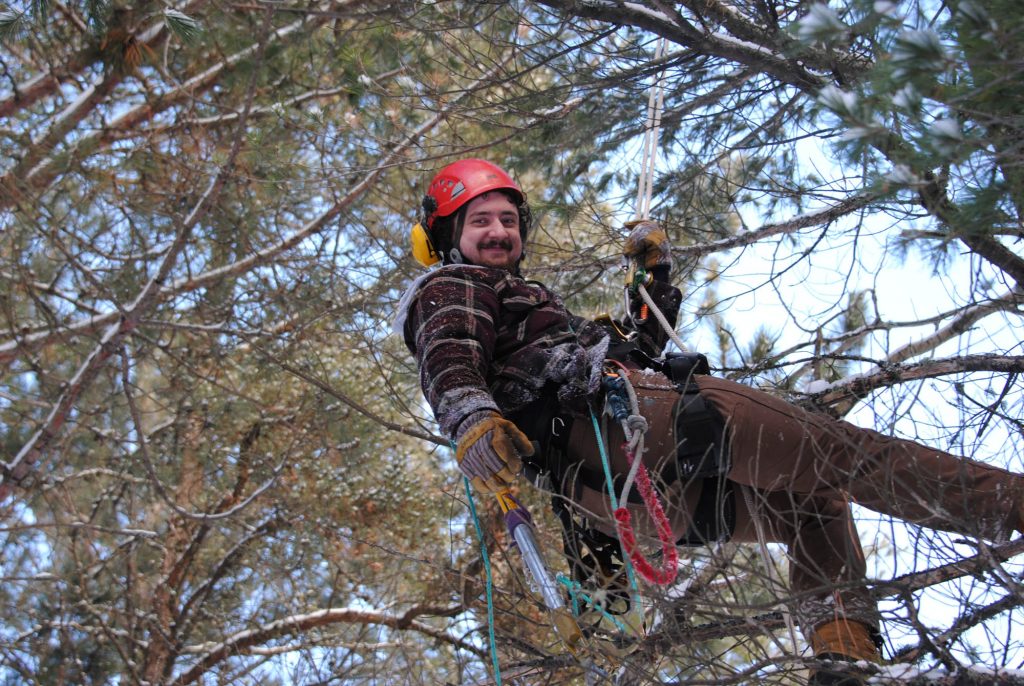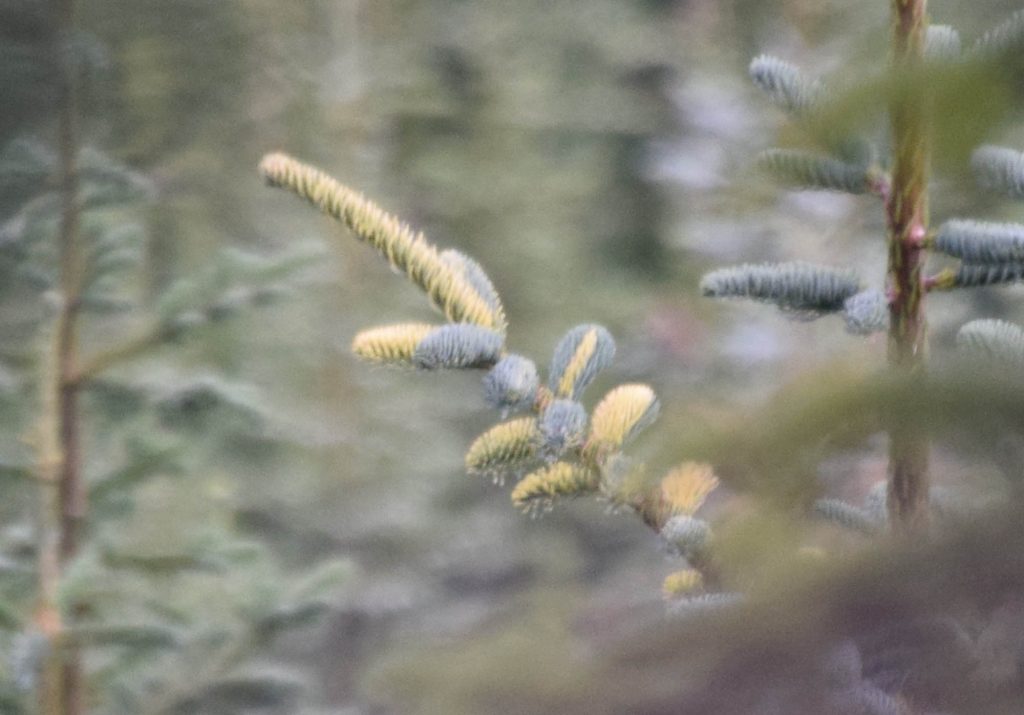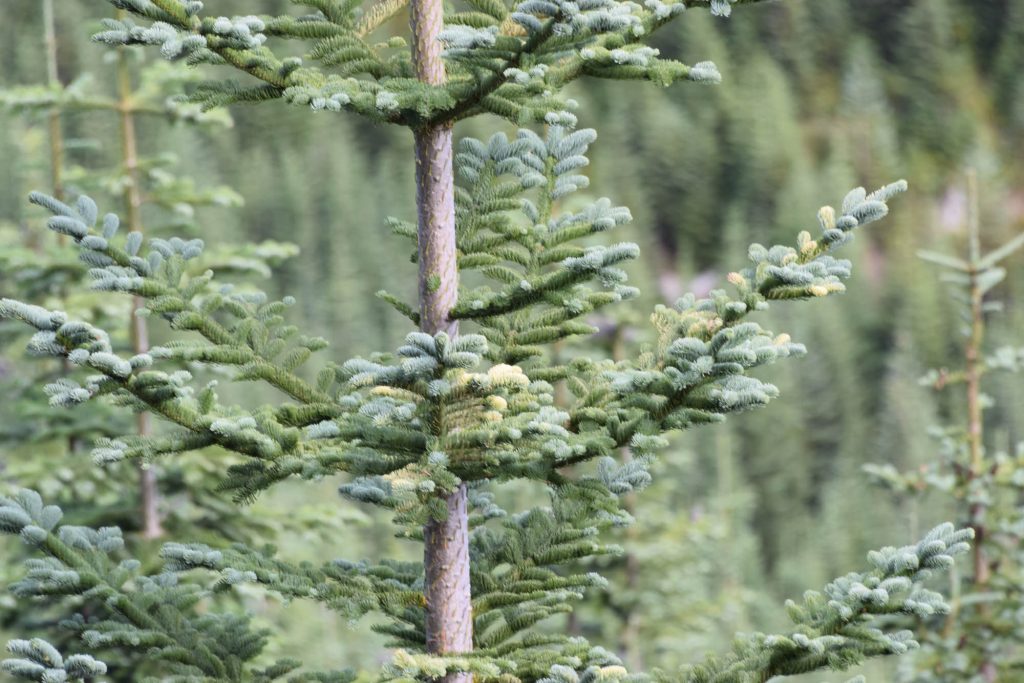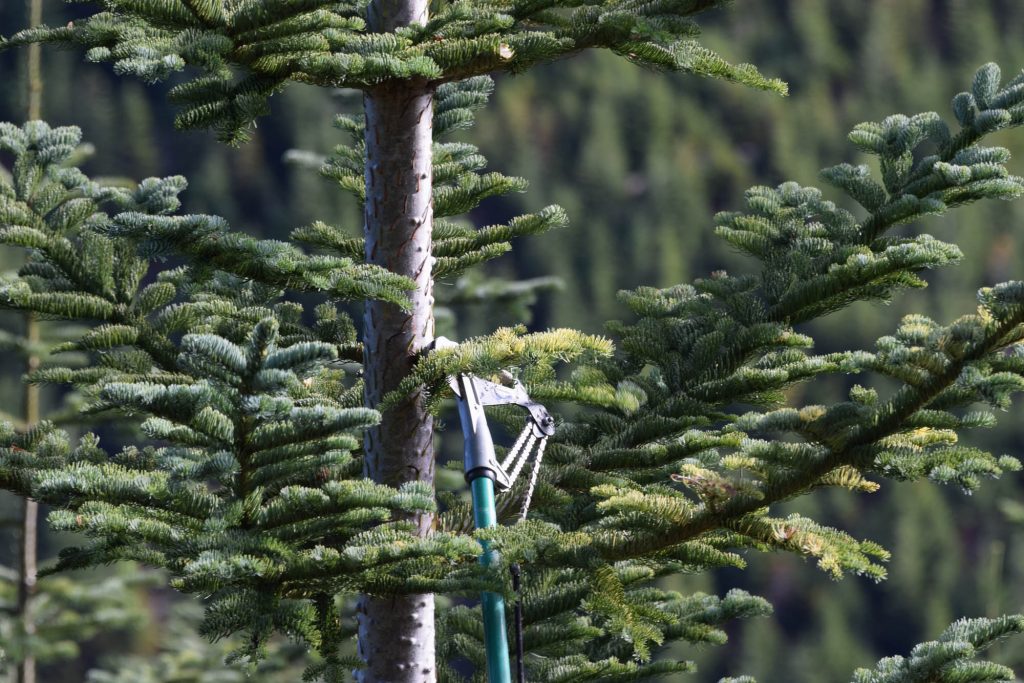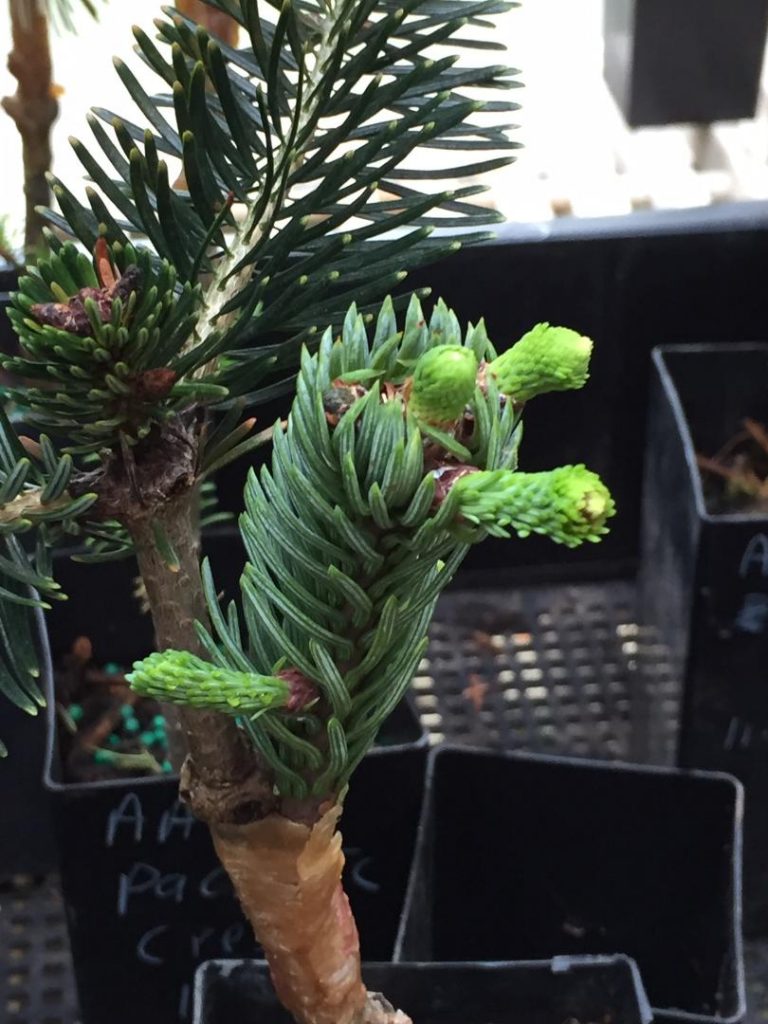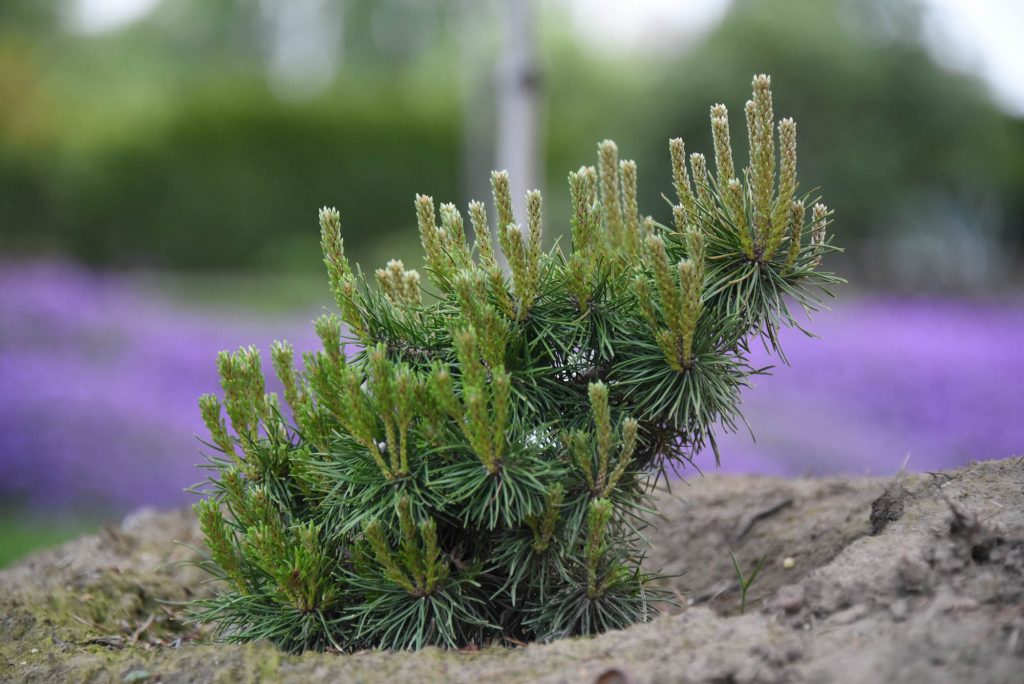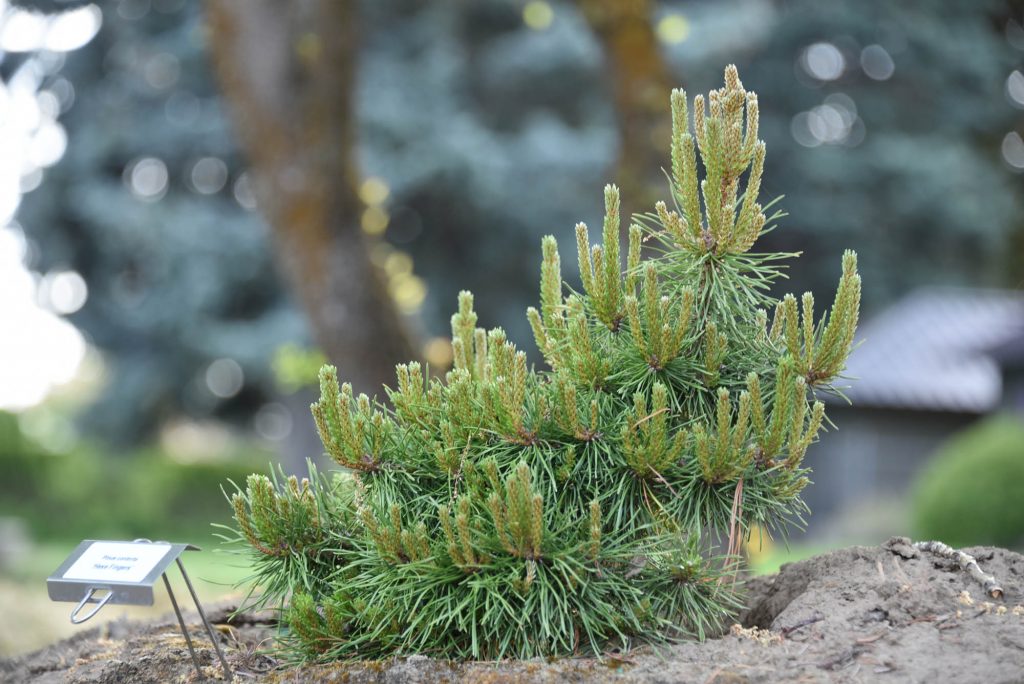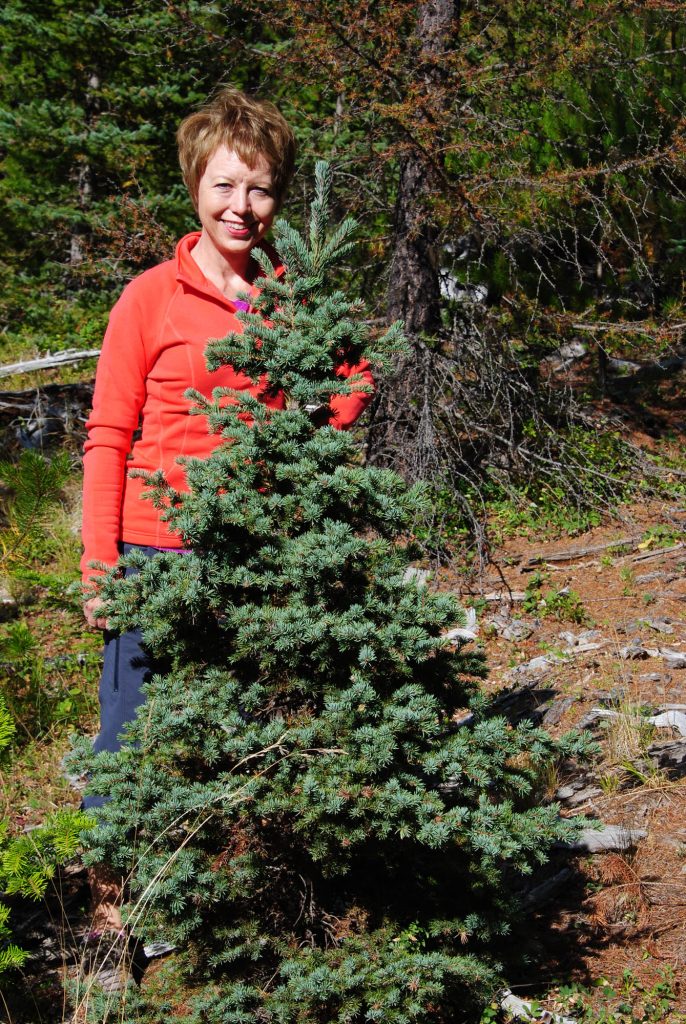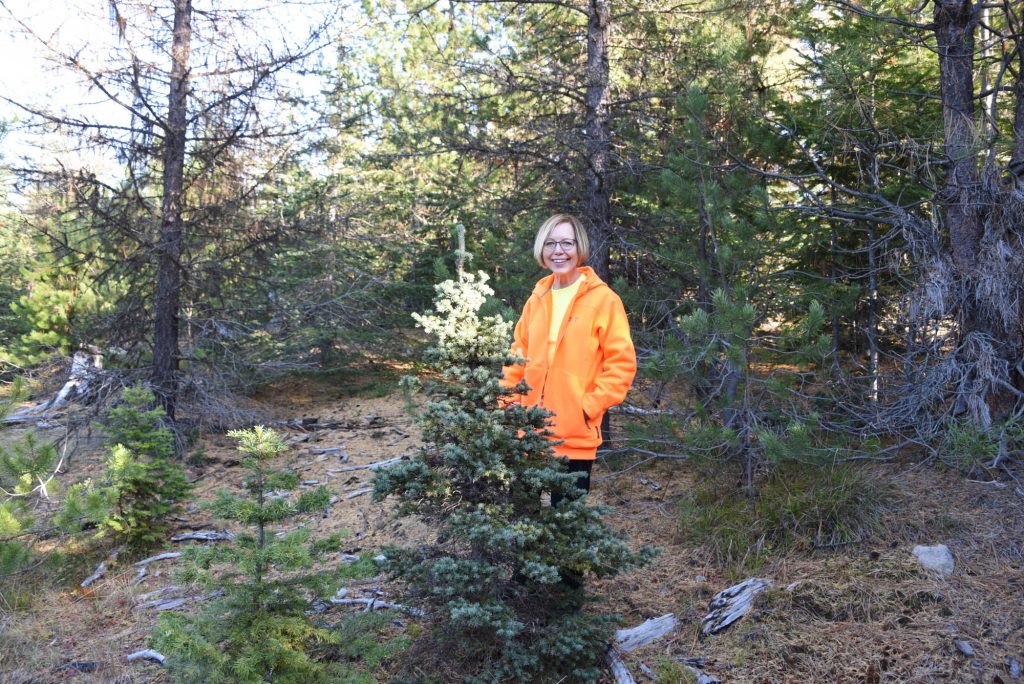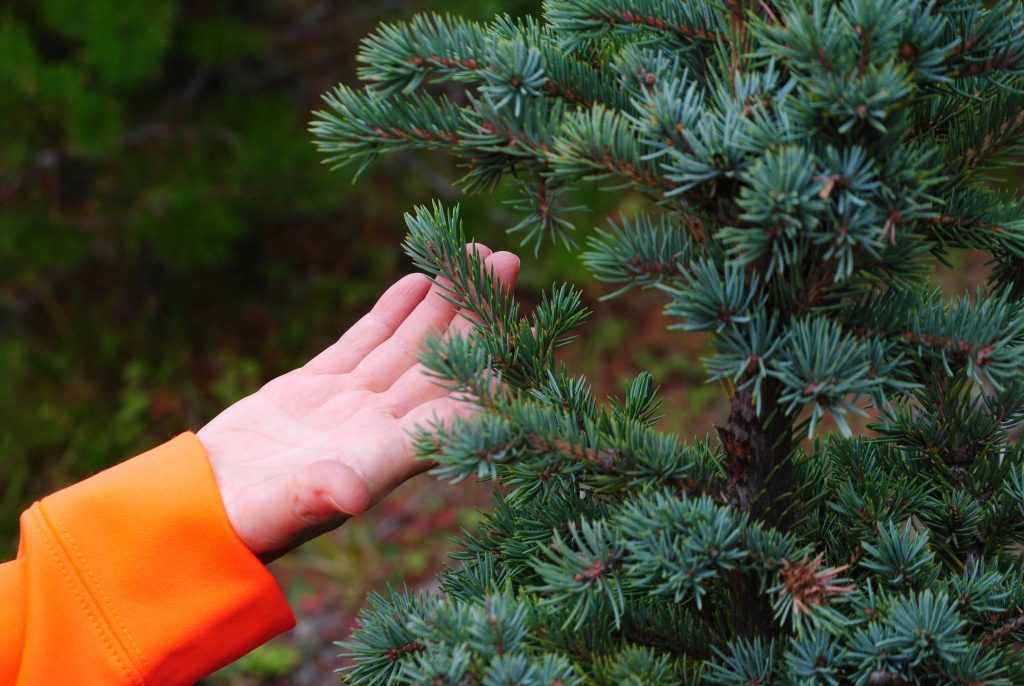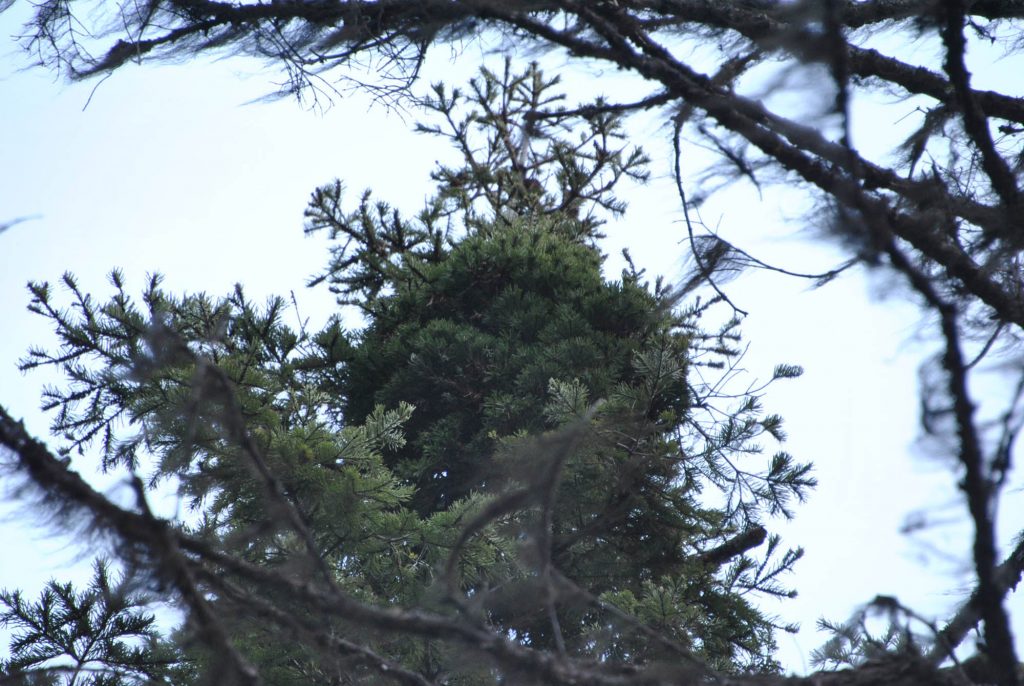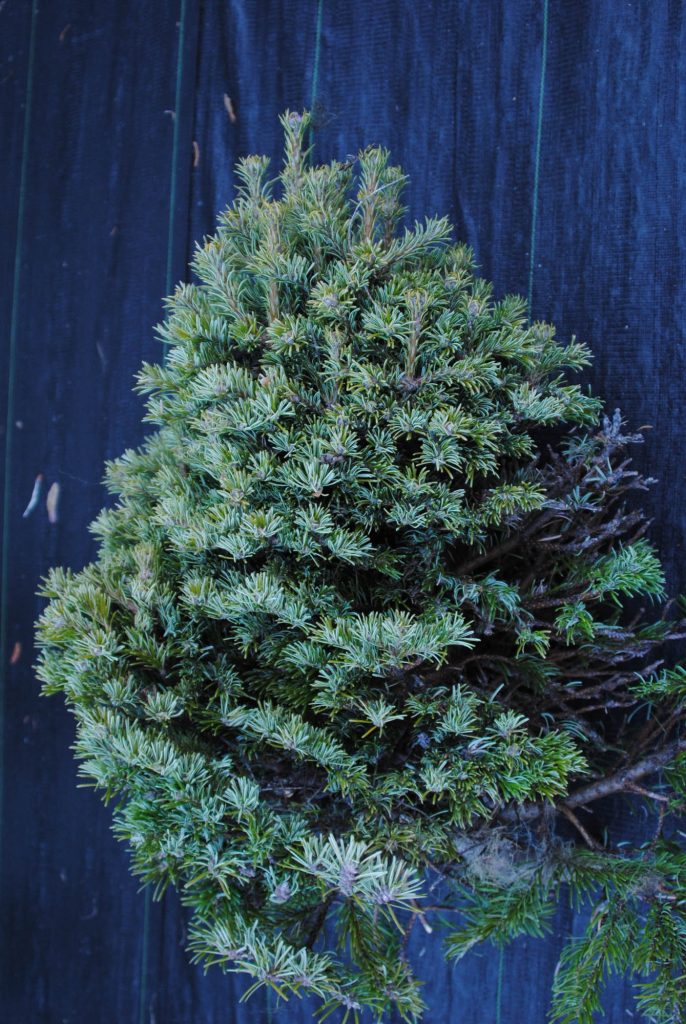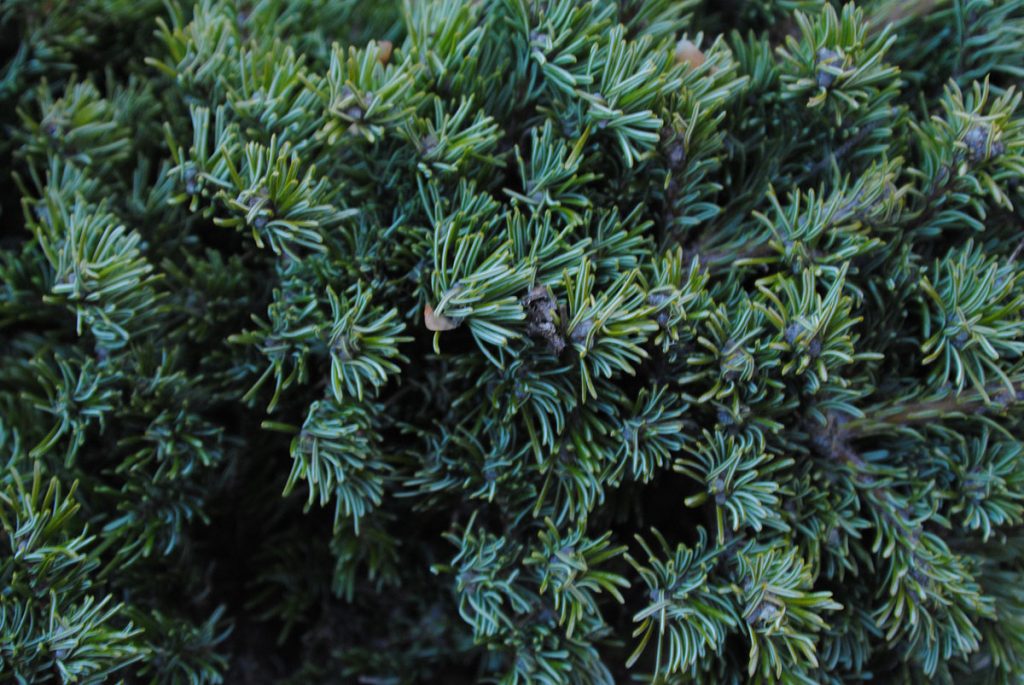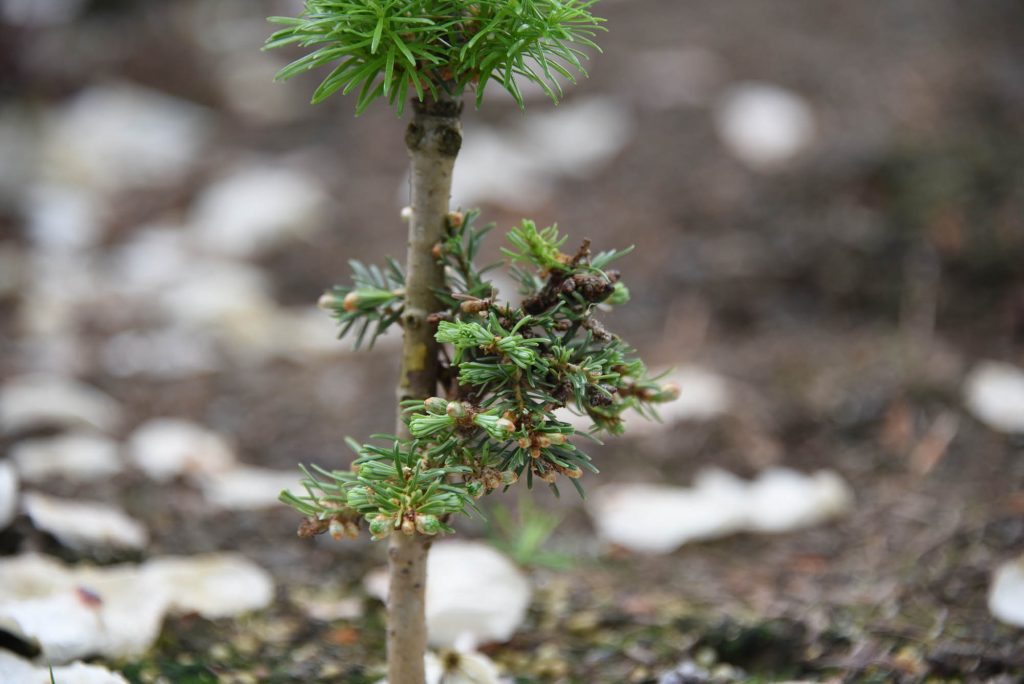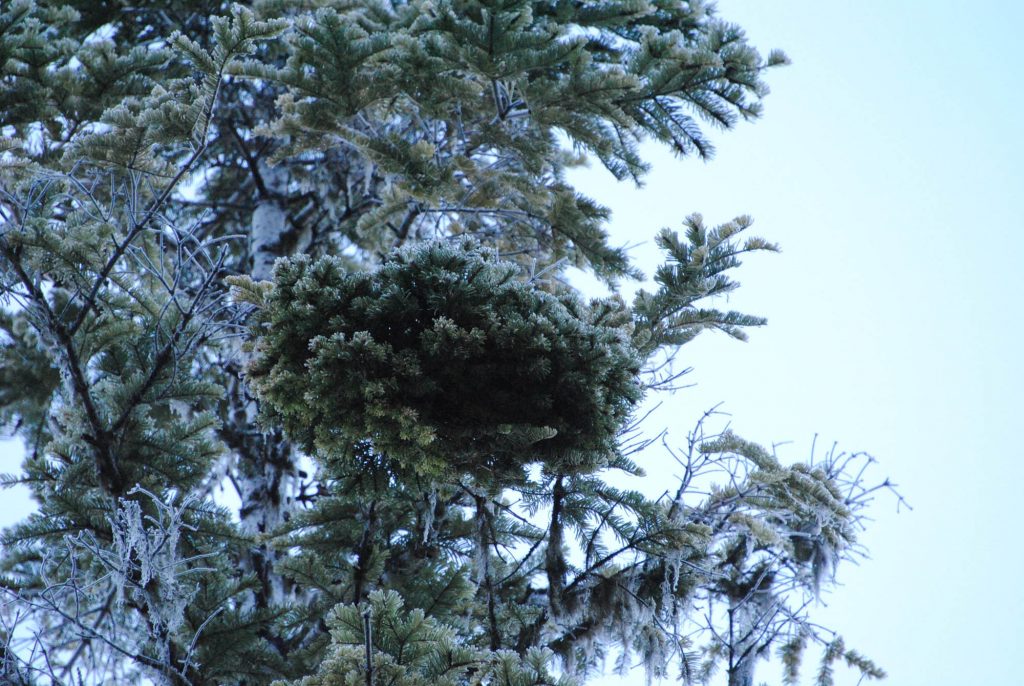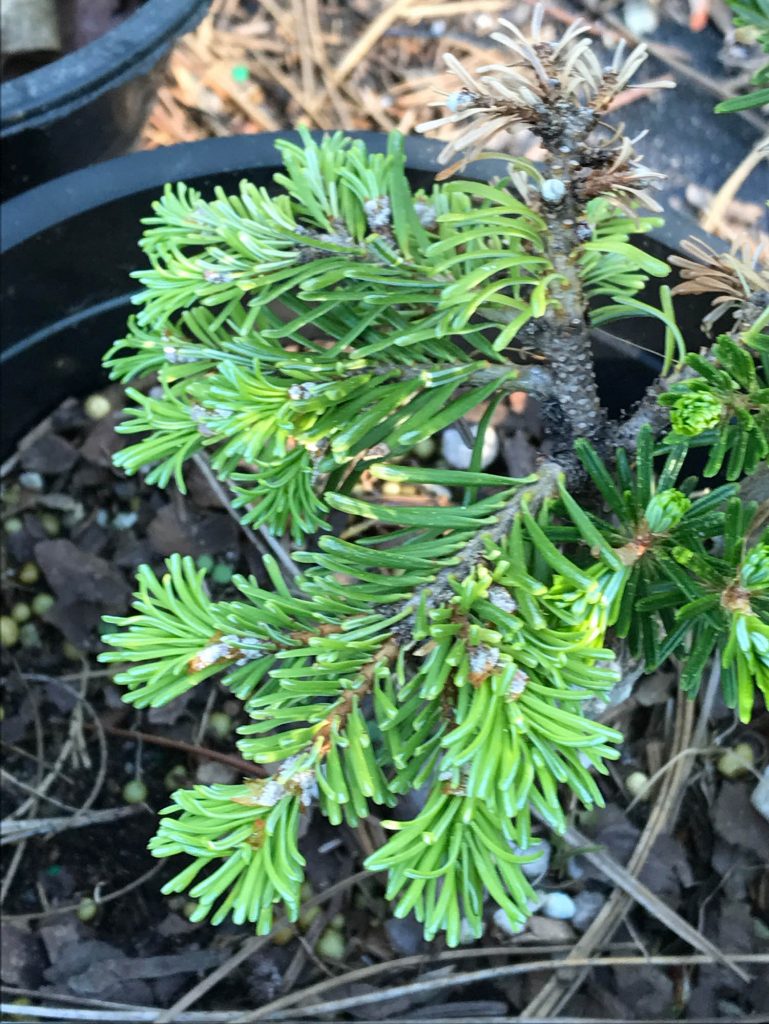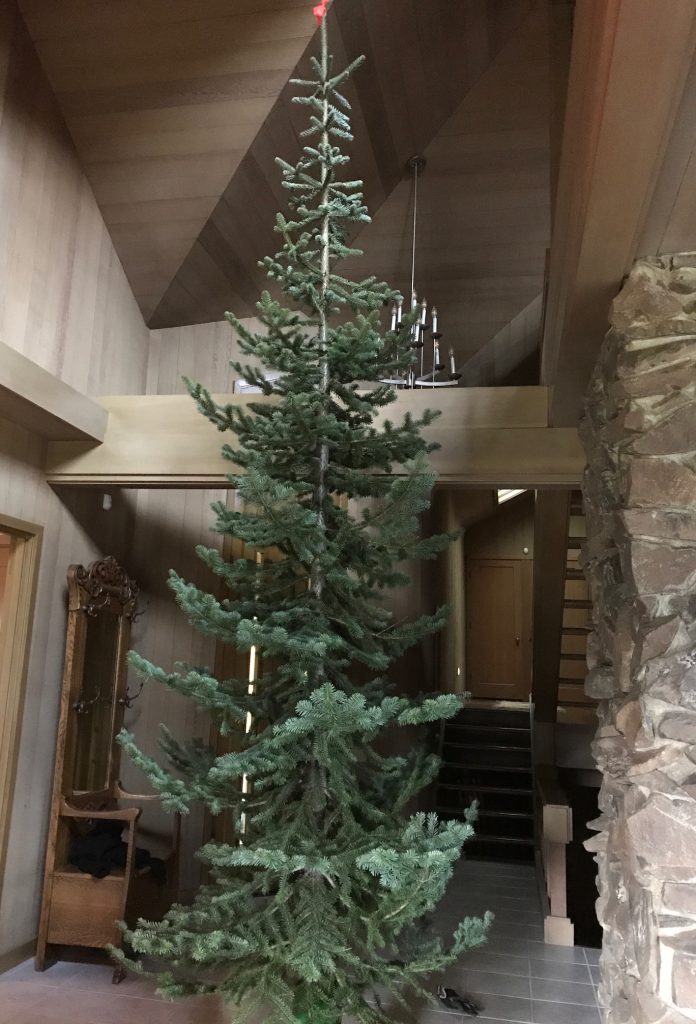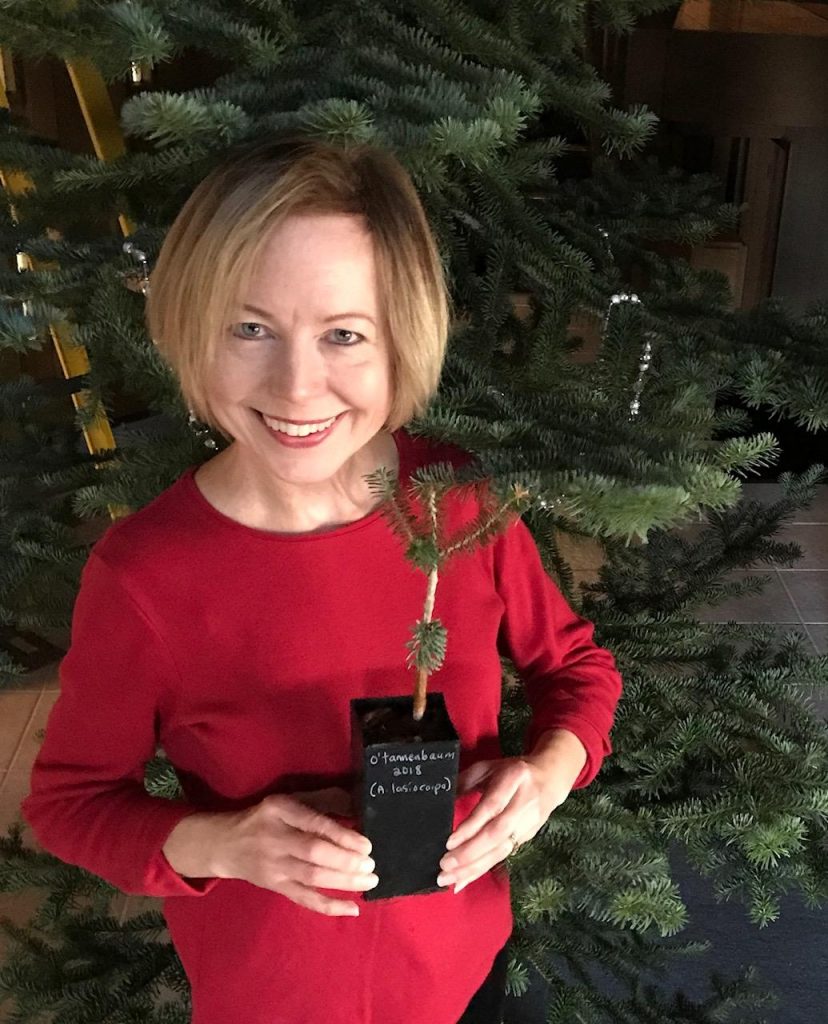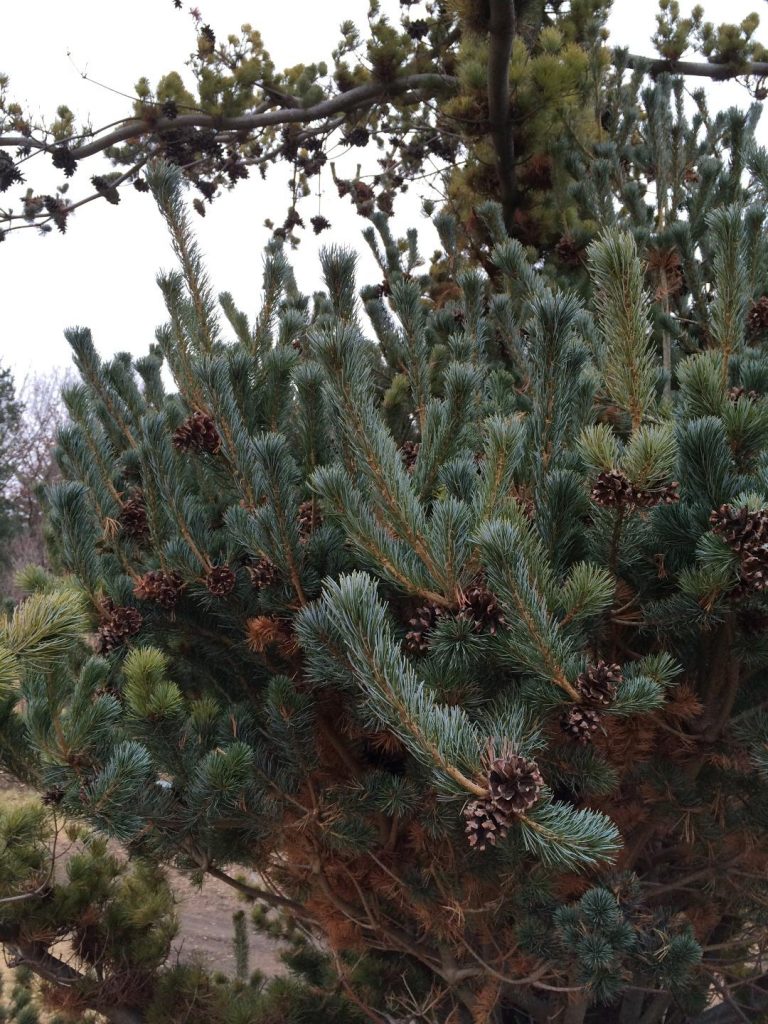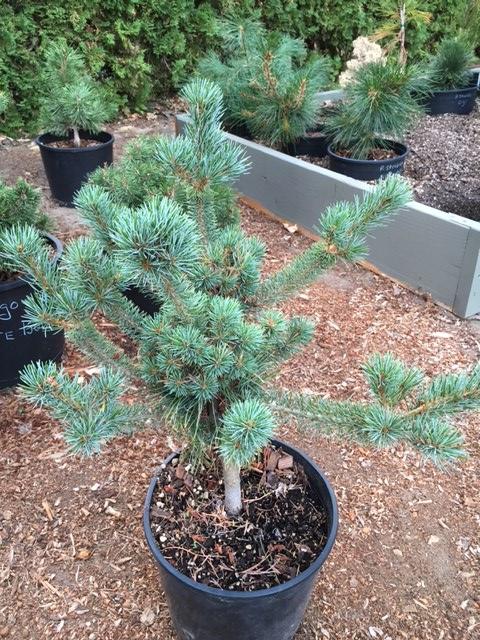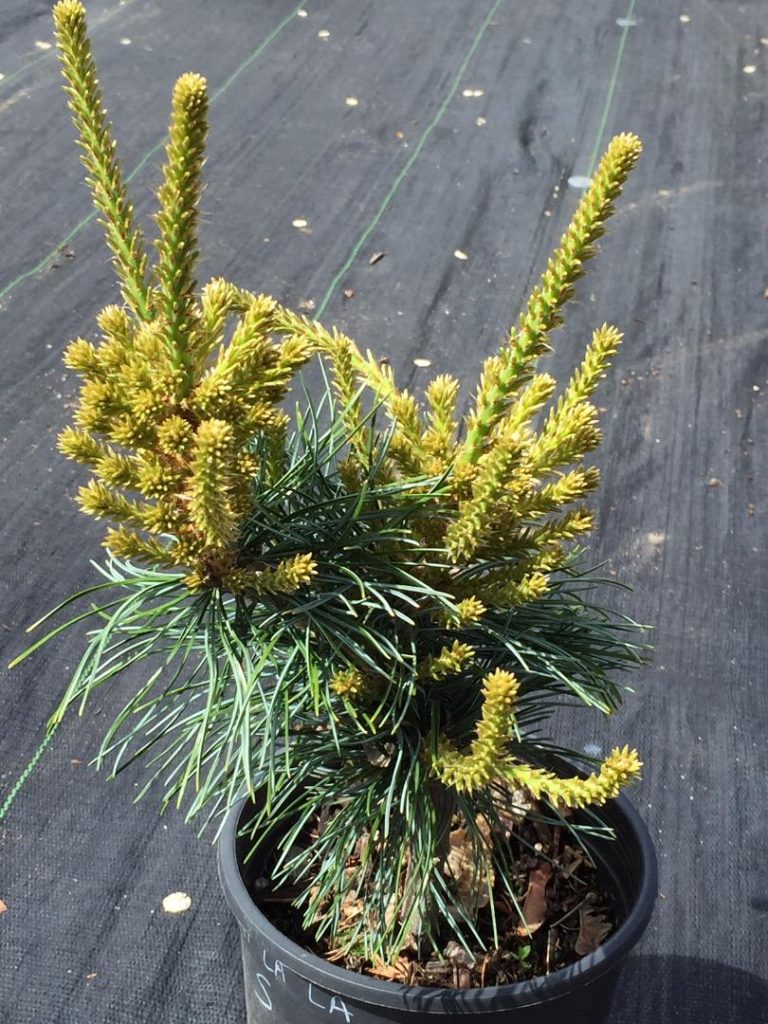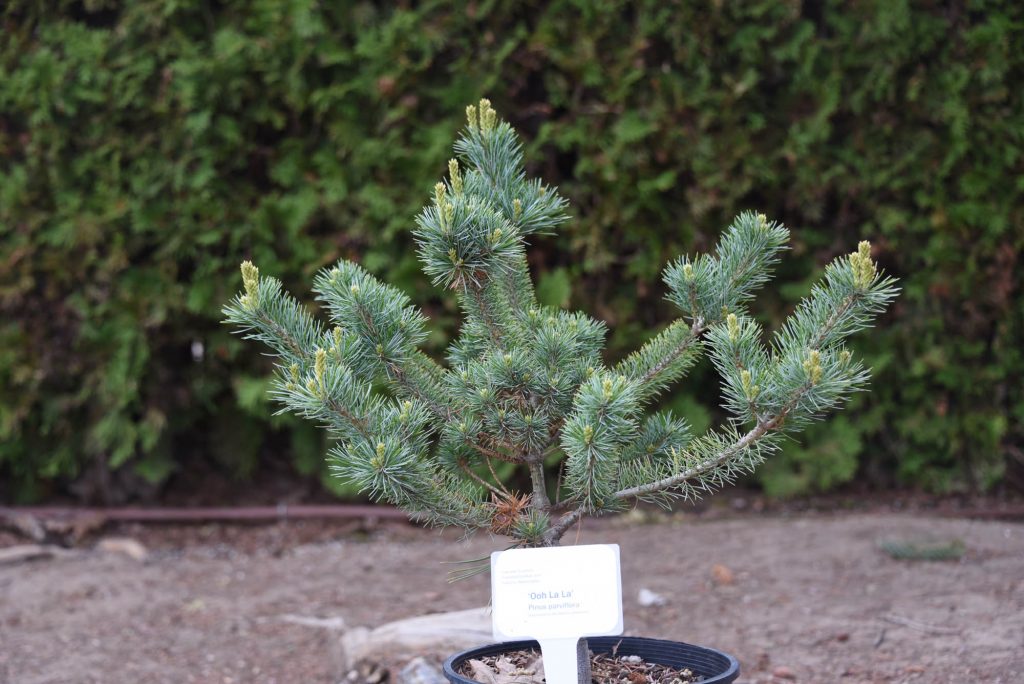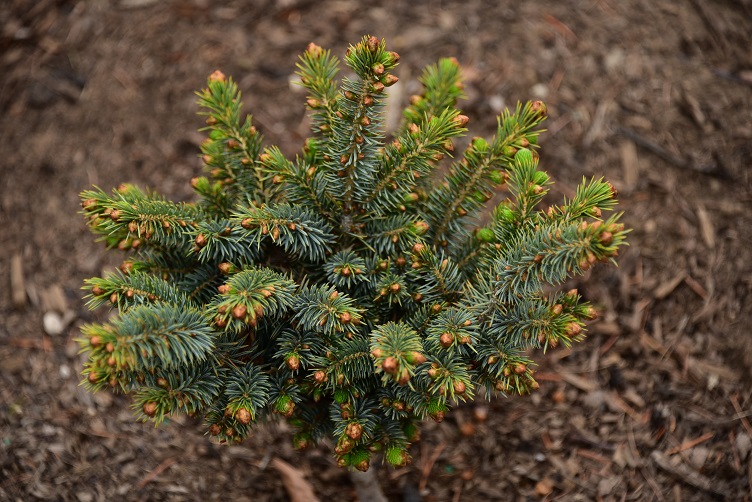

Picea sitchensis ‘Cliff Hanger’ is a new cultivar from a very compact Sitka spruce broom that was discovered on a tree that was undermined and hanging on the edge of a bluff overlooking the Pacific Ocean. The broom was discovered in late January 2019 during a long weekend vacation in Newport, Oregon. Our vacations always ultimately turn into broom hunting expeditions. We arrived at the hotel at dusk, with just enough time for a quick walk on the beach! And instead of looking at the ocean, Mike was looking at the Sitka spruce trees on the edge of the bluff. Mike spotted a dark blob of dead wood and said “I bet that’s a broom”. Sure enough, the next morning, not only a broom, but a Sitka broom, with beautiful tiny healthy clusters of growth mixed in with the broom’s gnarly dead wood. The owners of the property were delighted and kindly allowed us to harvest some of the branches. They had never noticed the broom (outside of their picture window and deck) before we pointed it out to them! The broom is ancient looking, like it has been growing for many years. There were numerous clustered buds and the growth rate on the broom was less than 1/2 inch. We did not want to spoil the appearance of their newly discovered treasure, and it was quite warm, in the 60’s, so we took only a few scions. The scion wood seemed dry and we were surprised that nearly all of the grafts pushed beautifully! The new cultivar is named Picea sitchensis ‘Cliff Hanger’!
